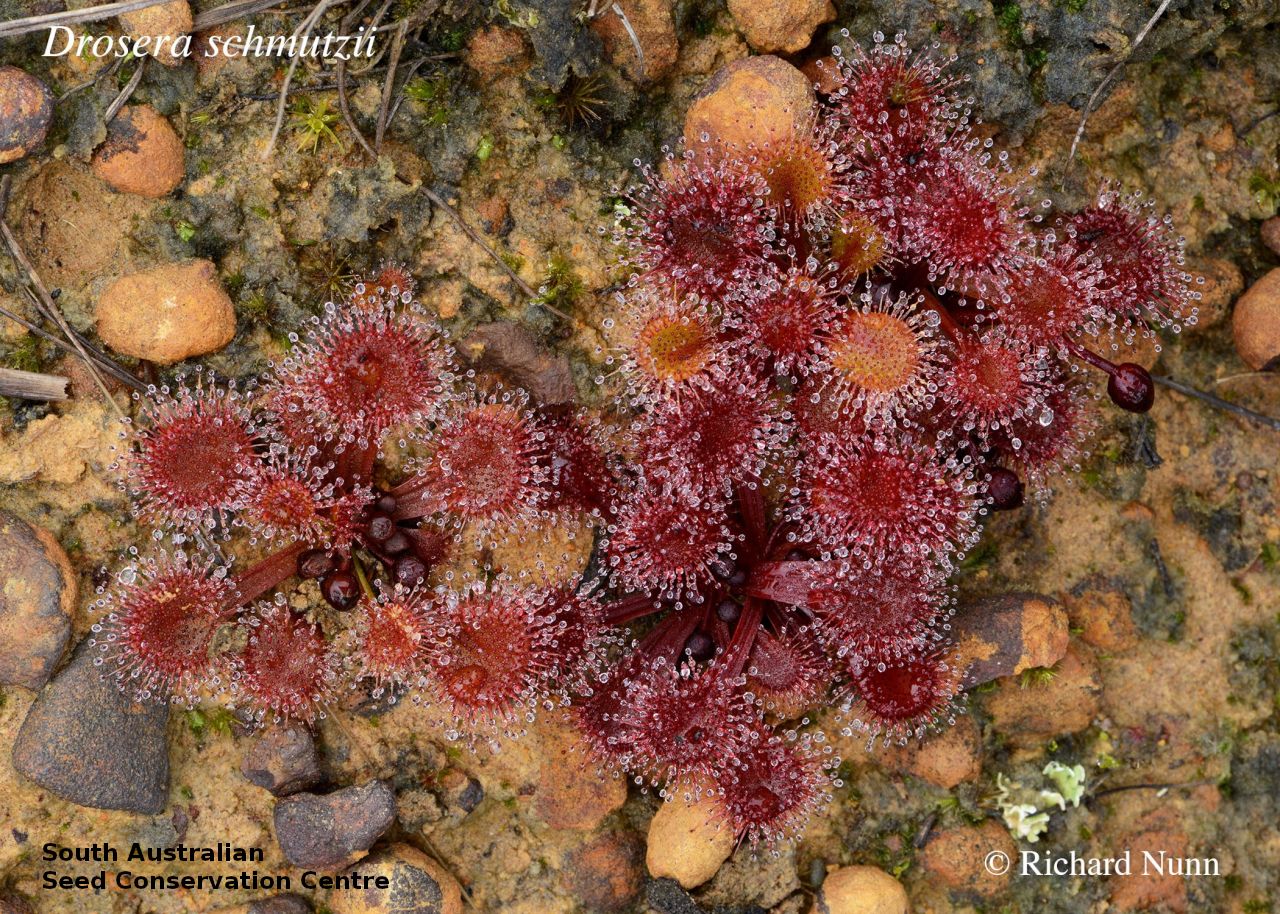
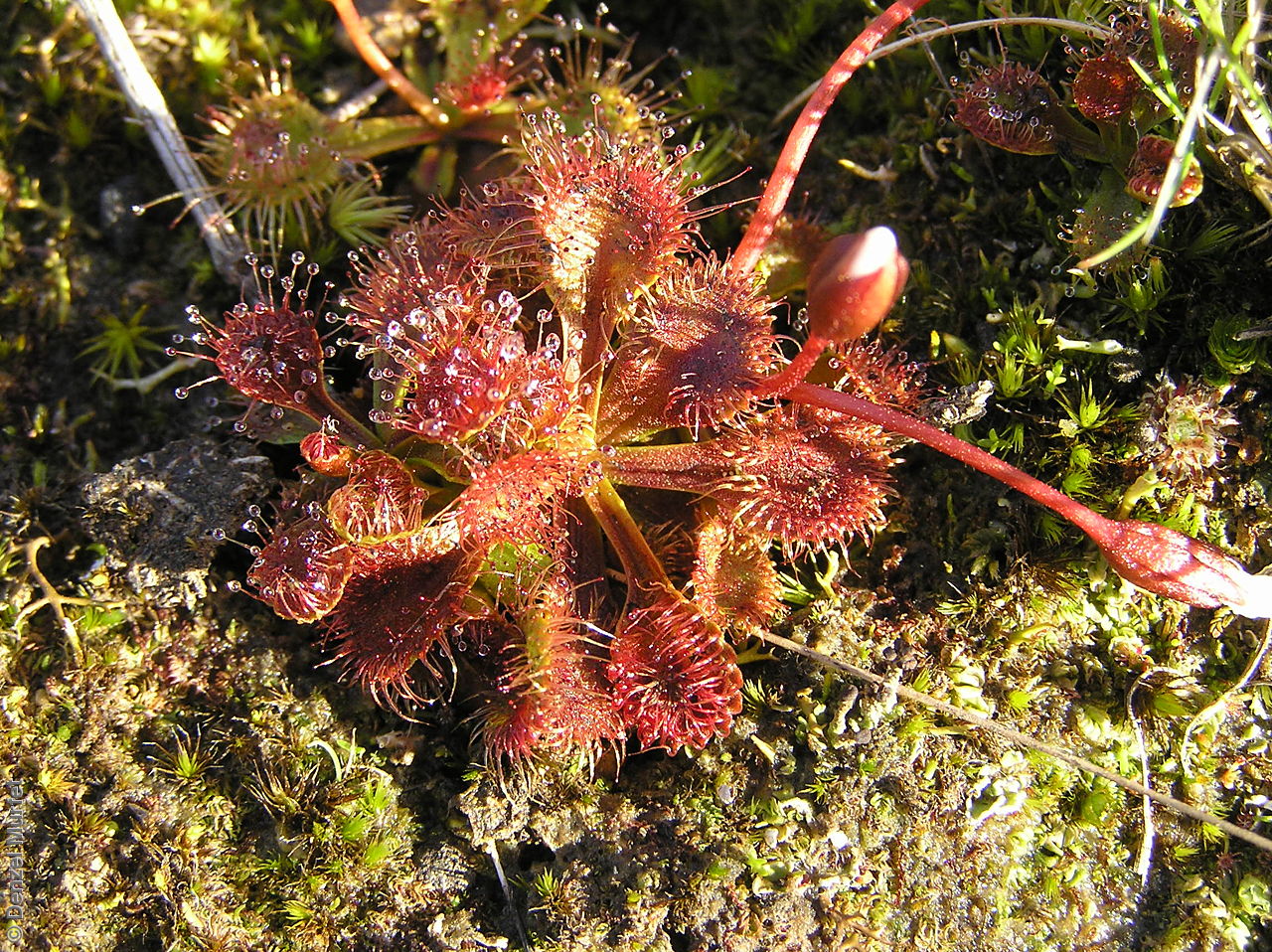
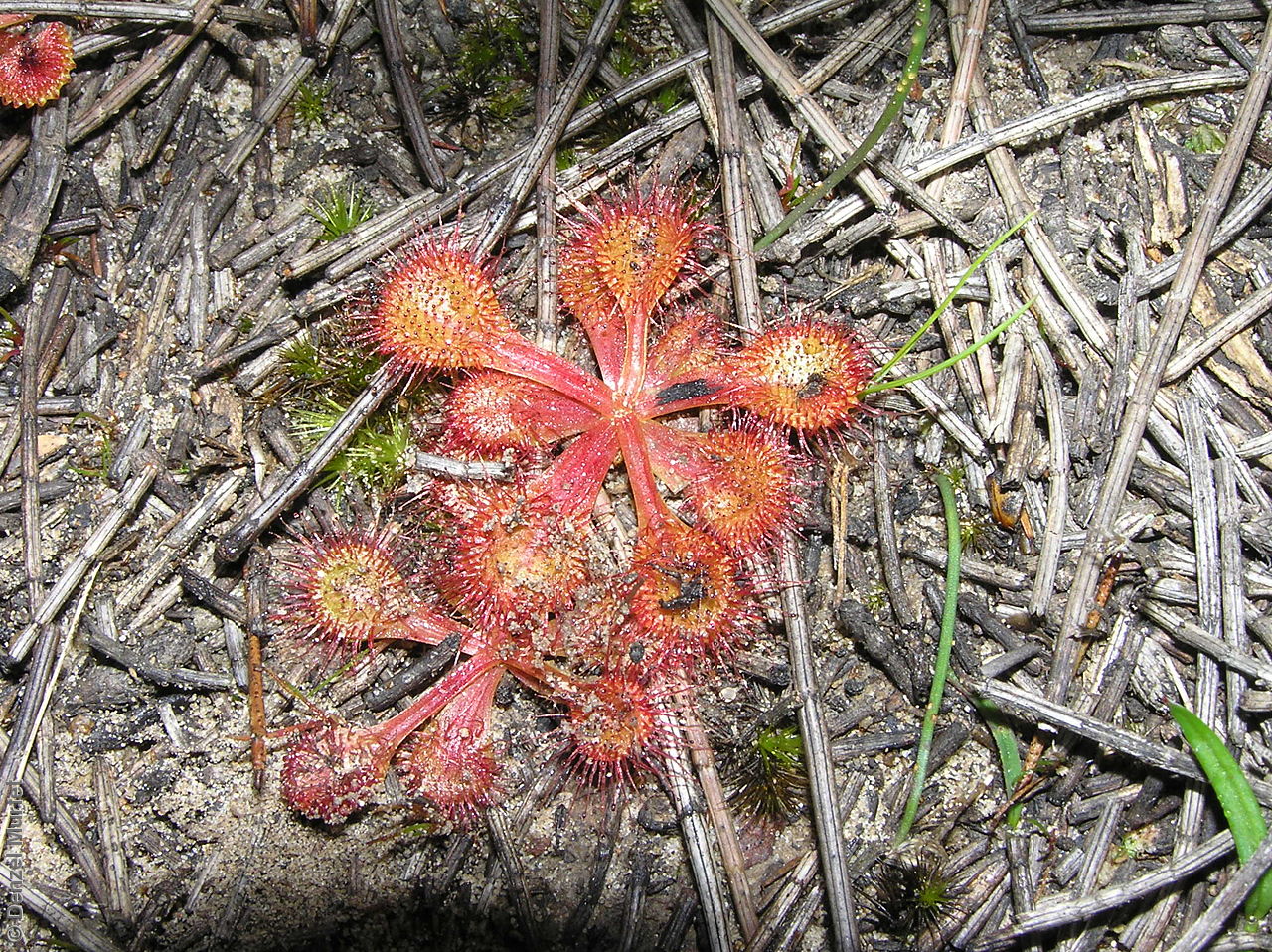
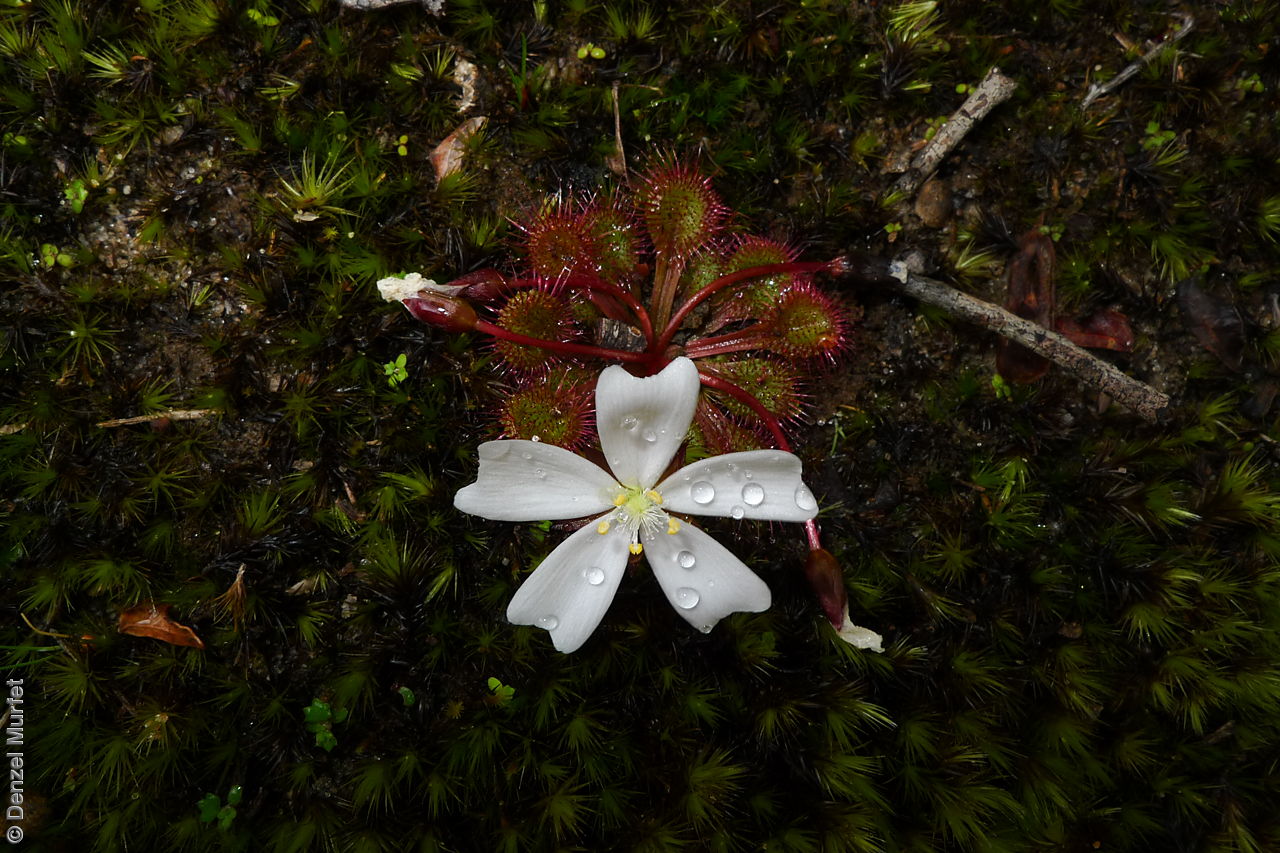
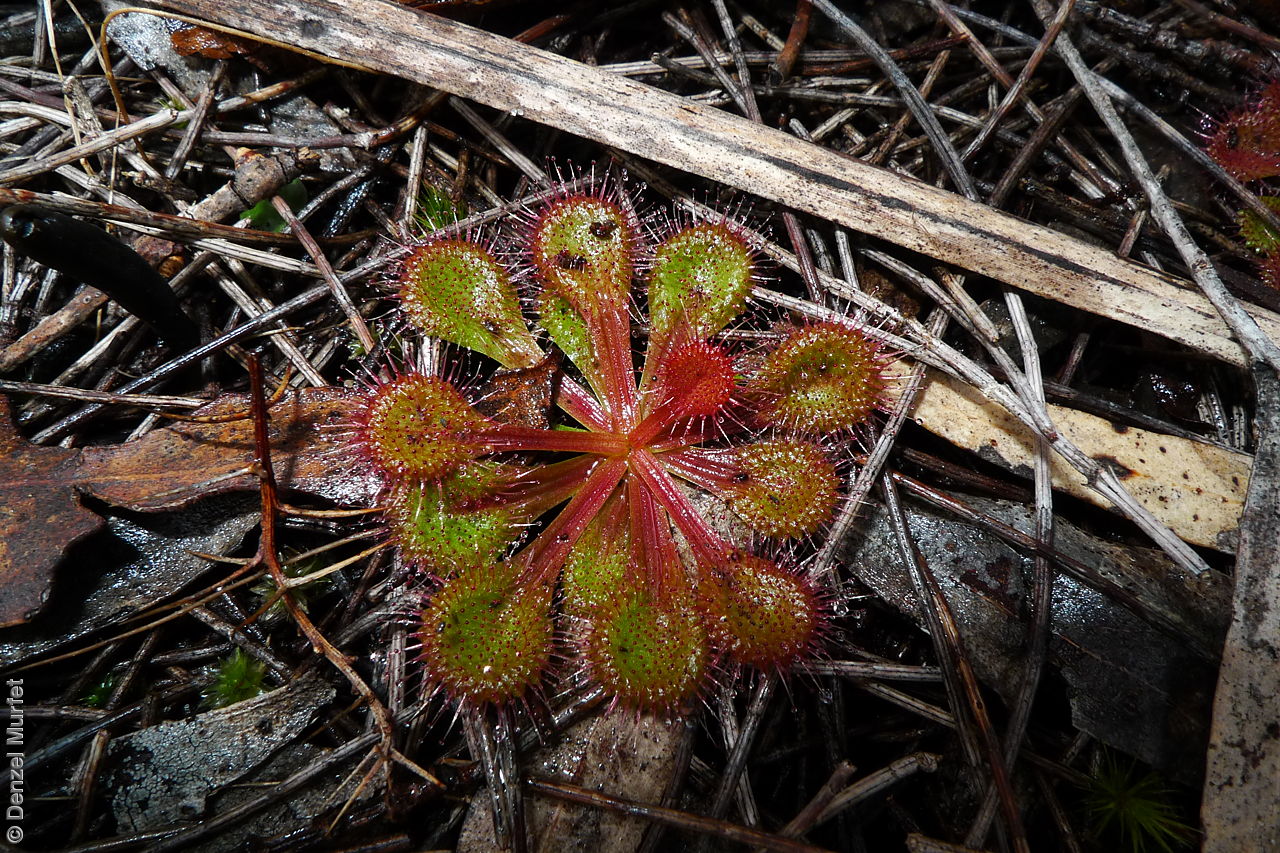
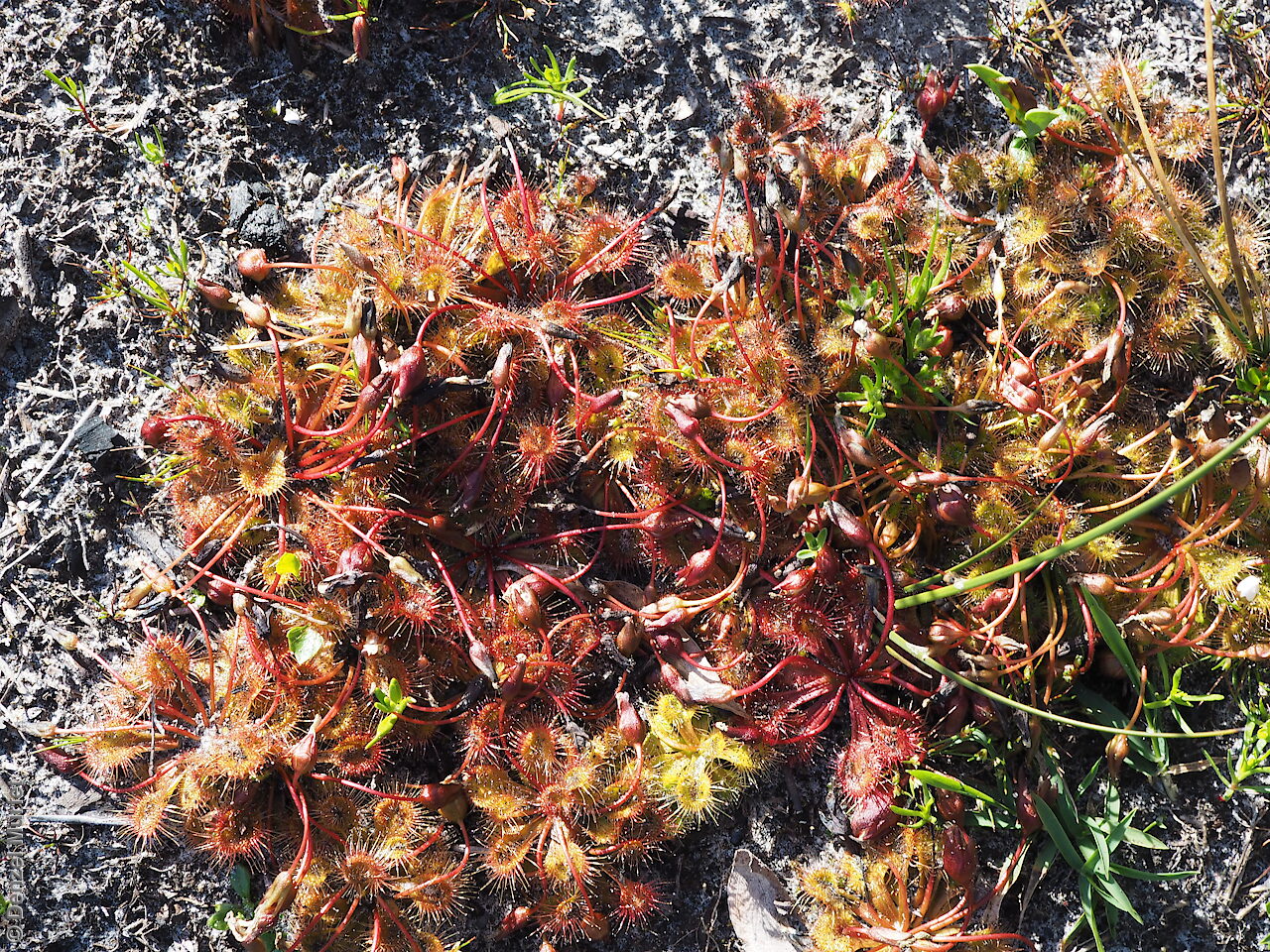
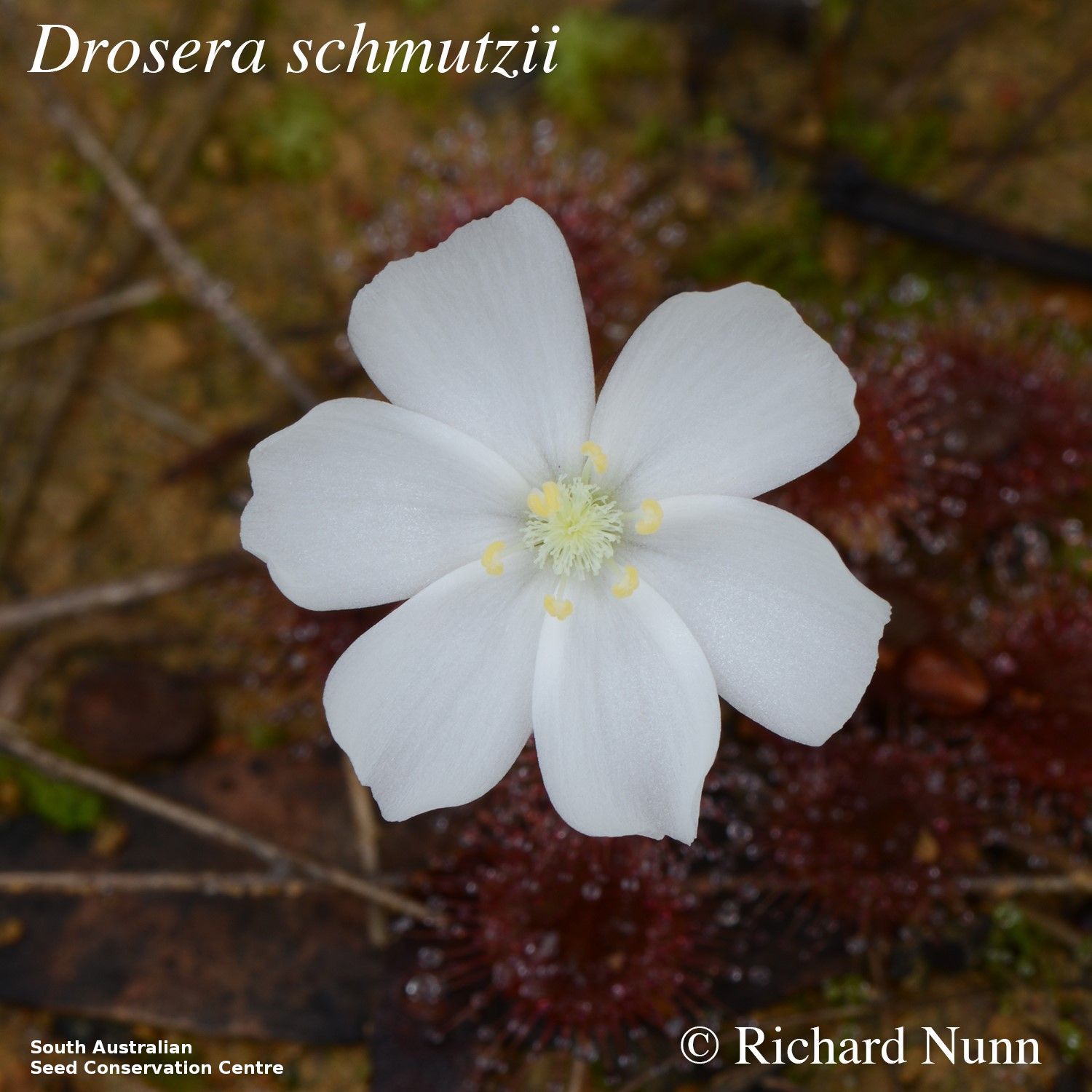
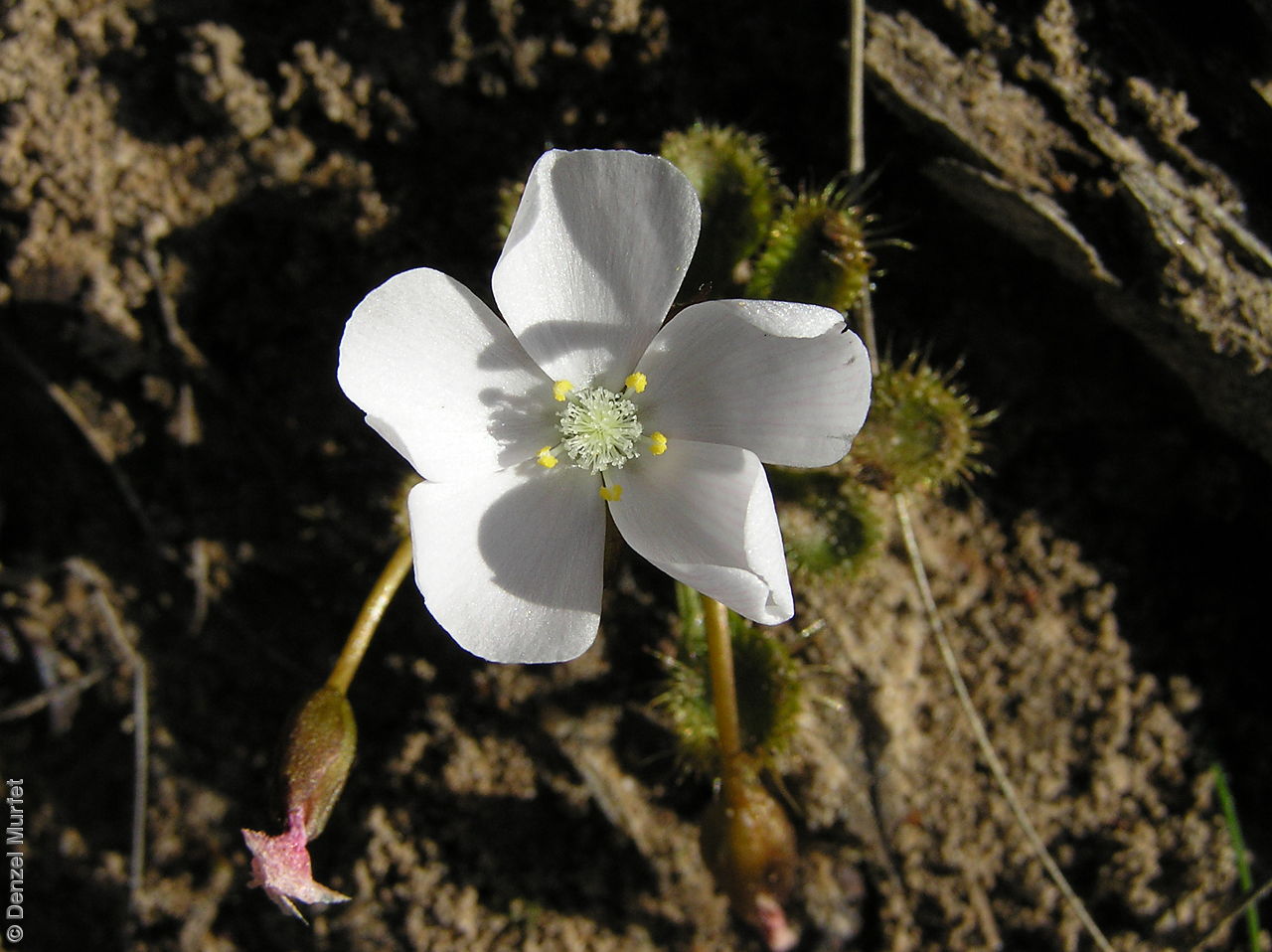
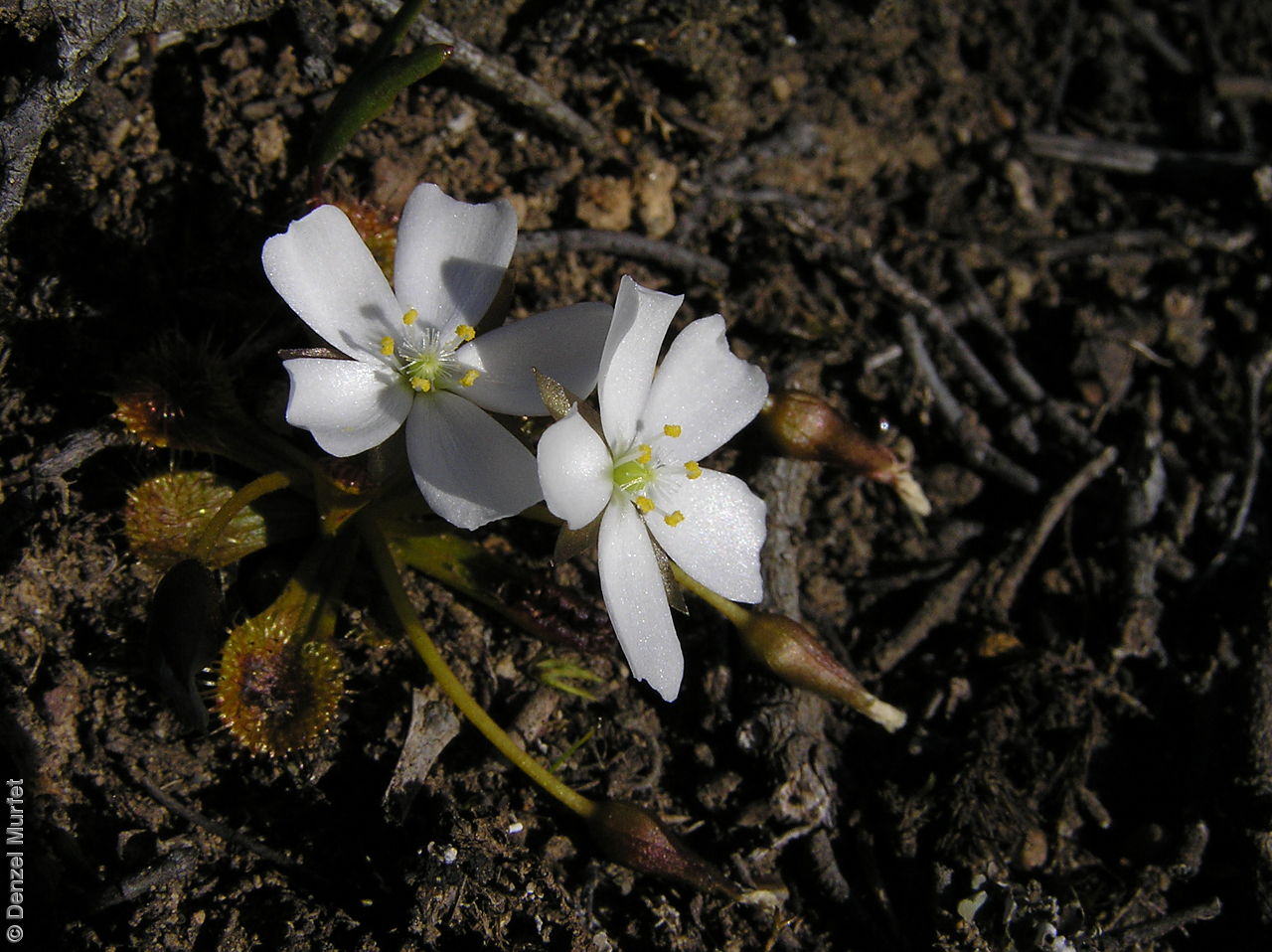
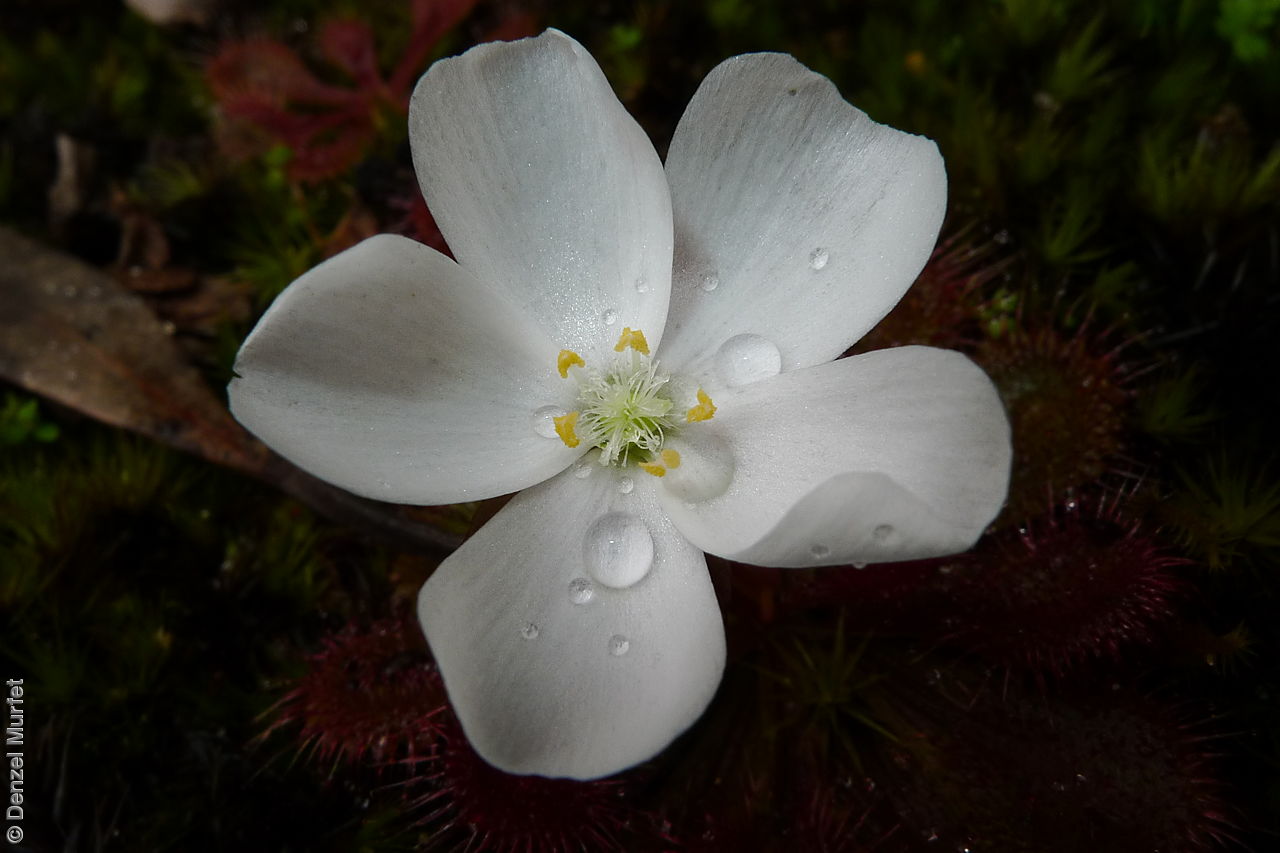
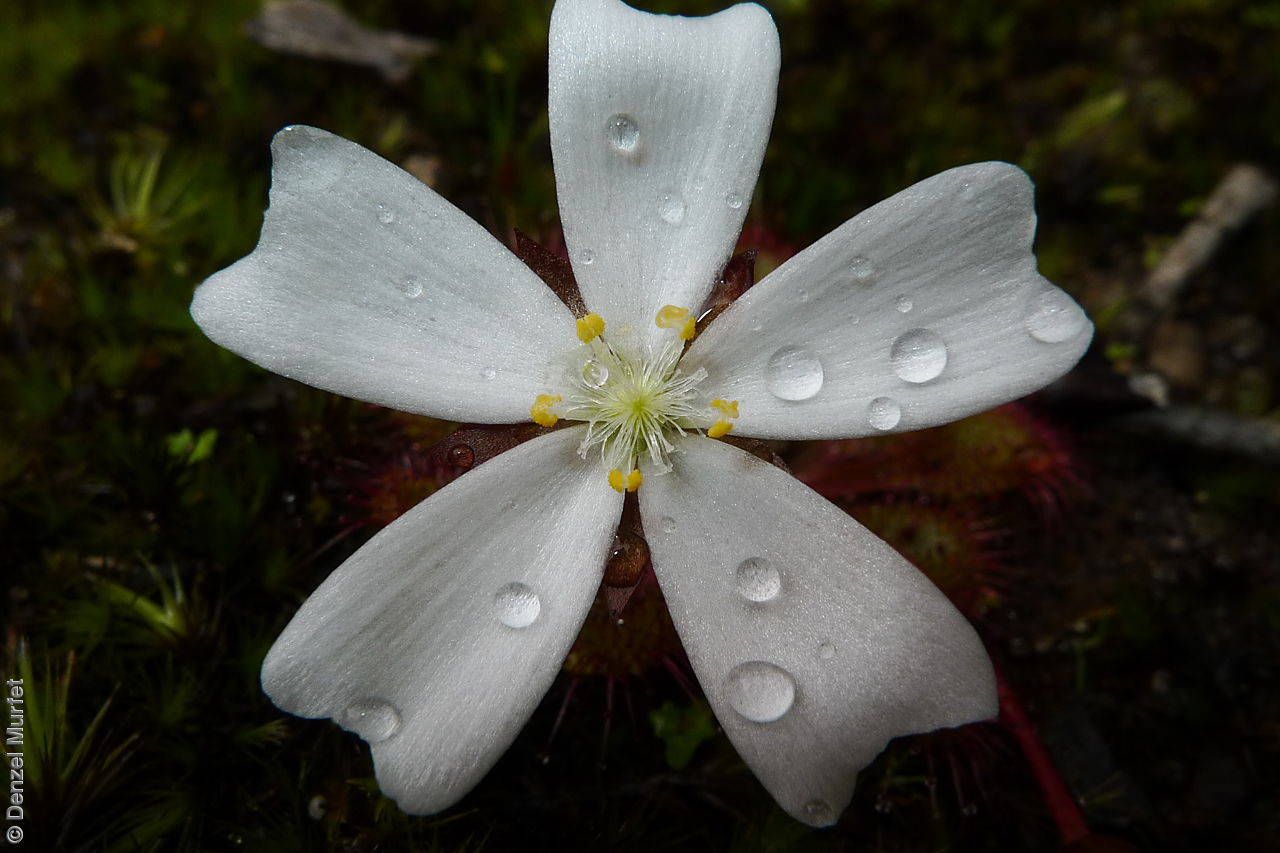
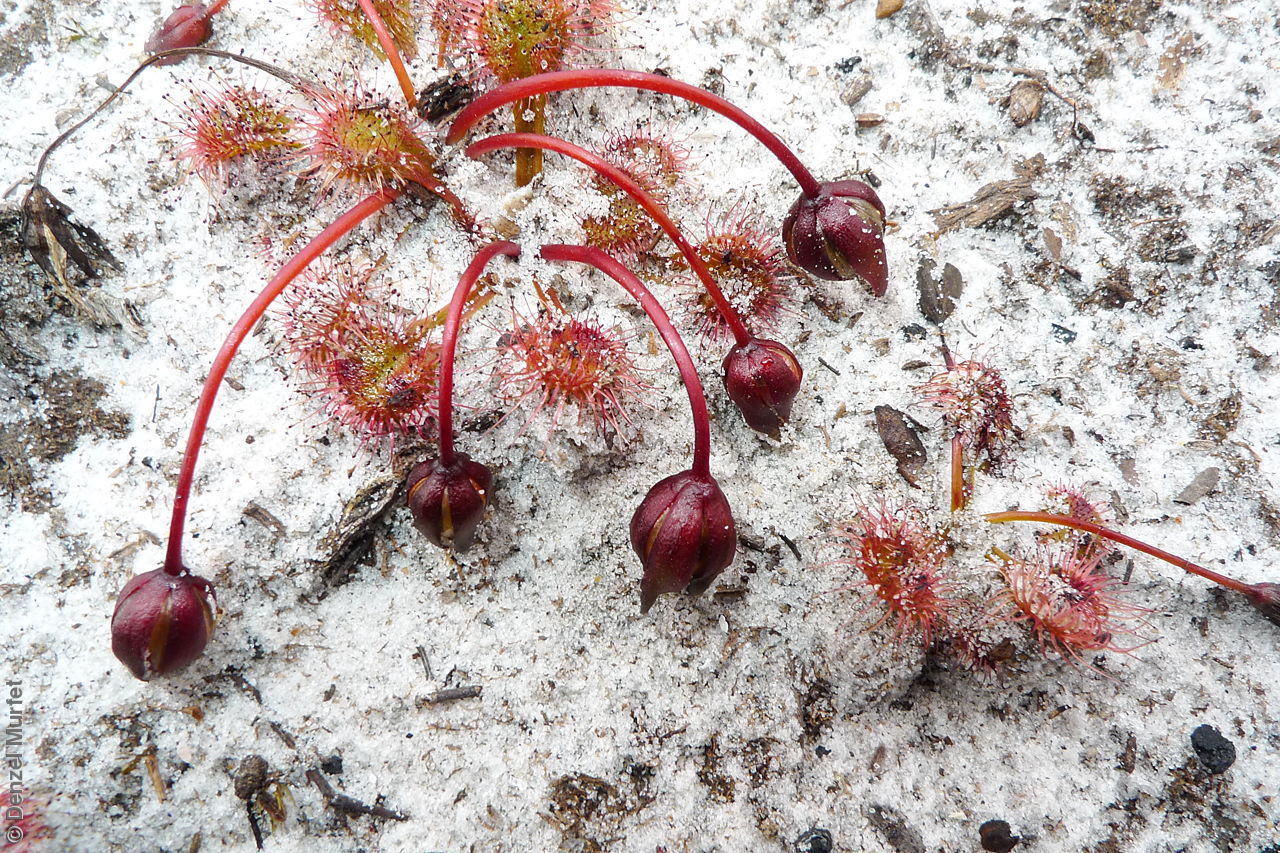
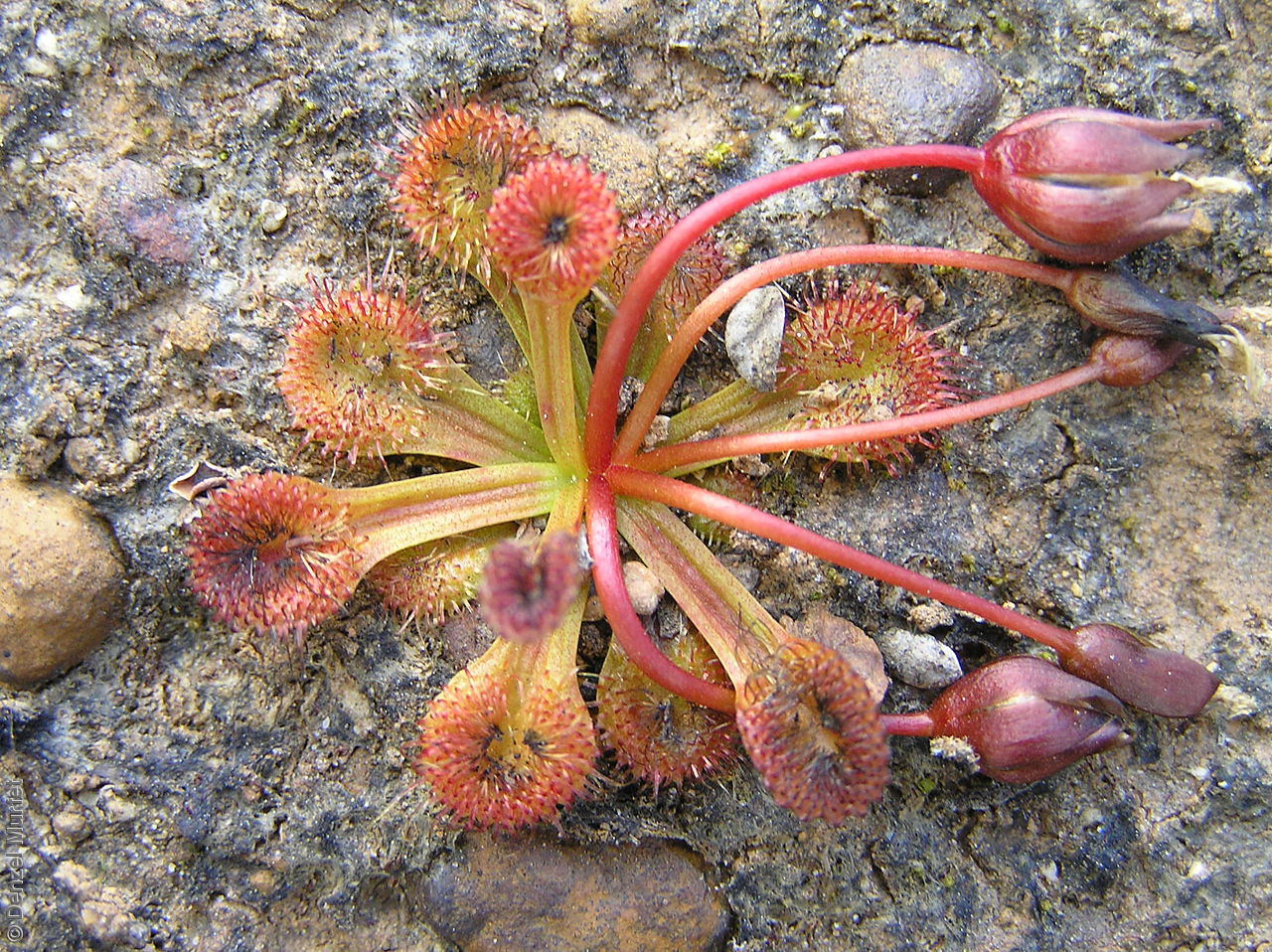
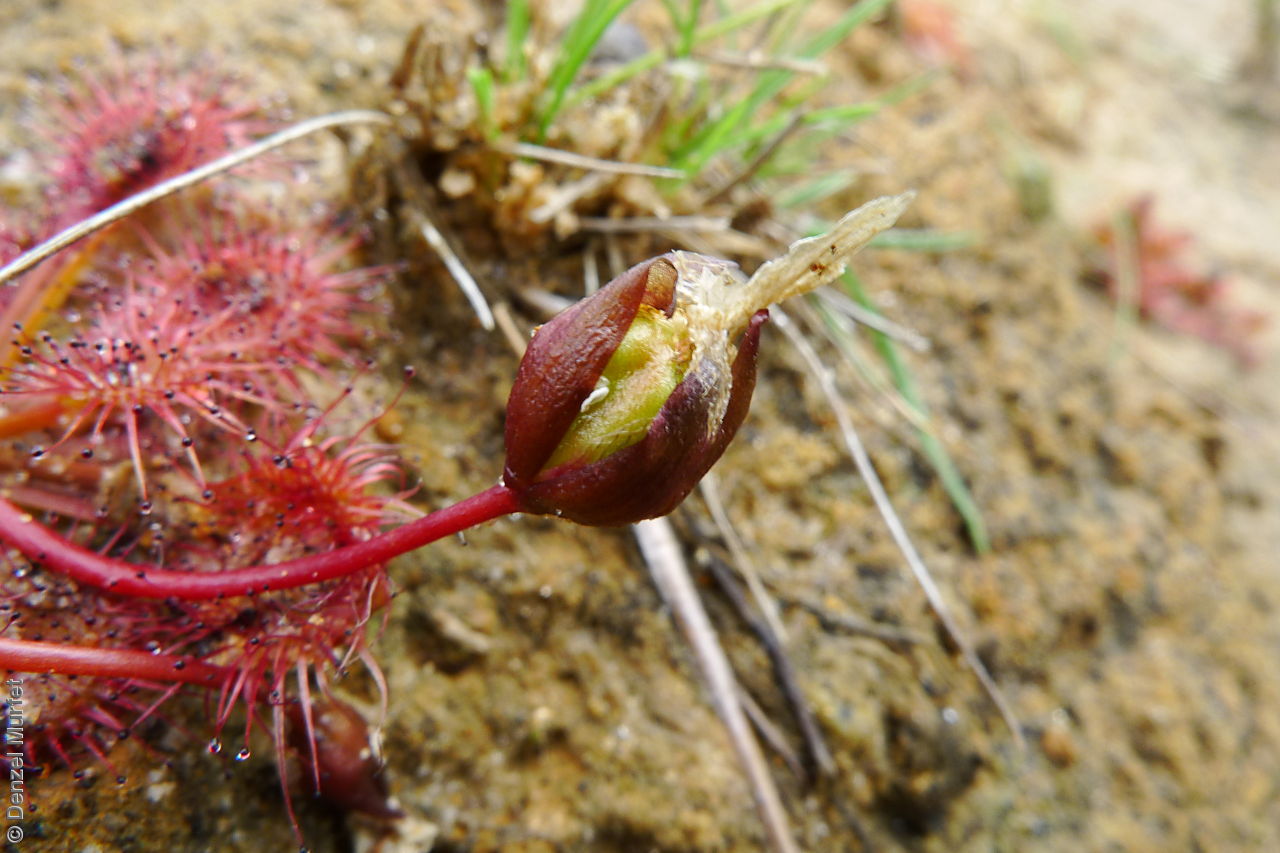
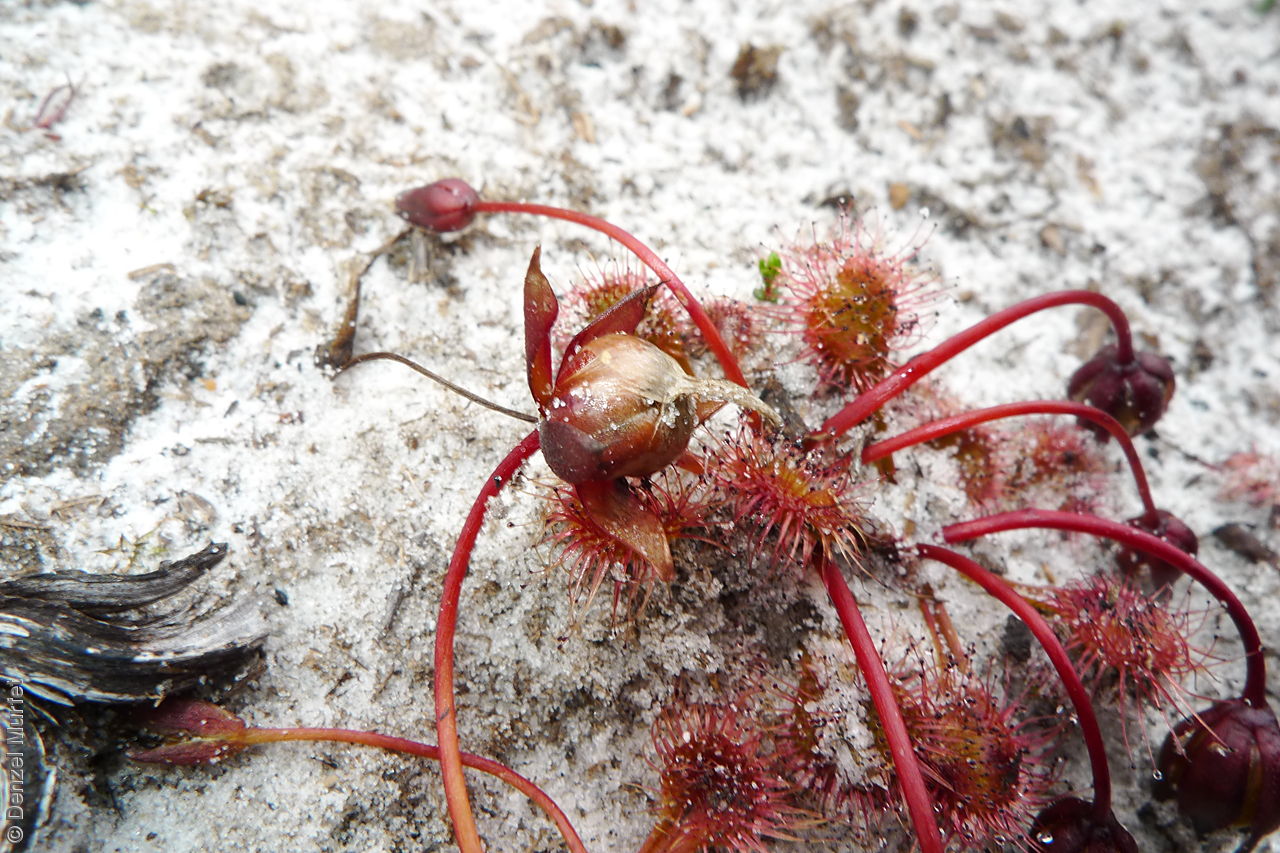
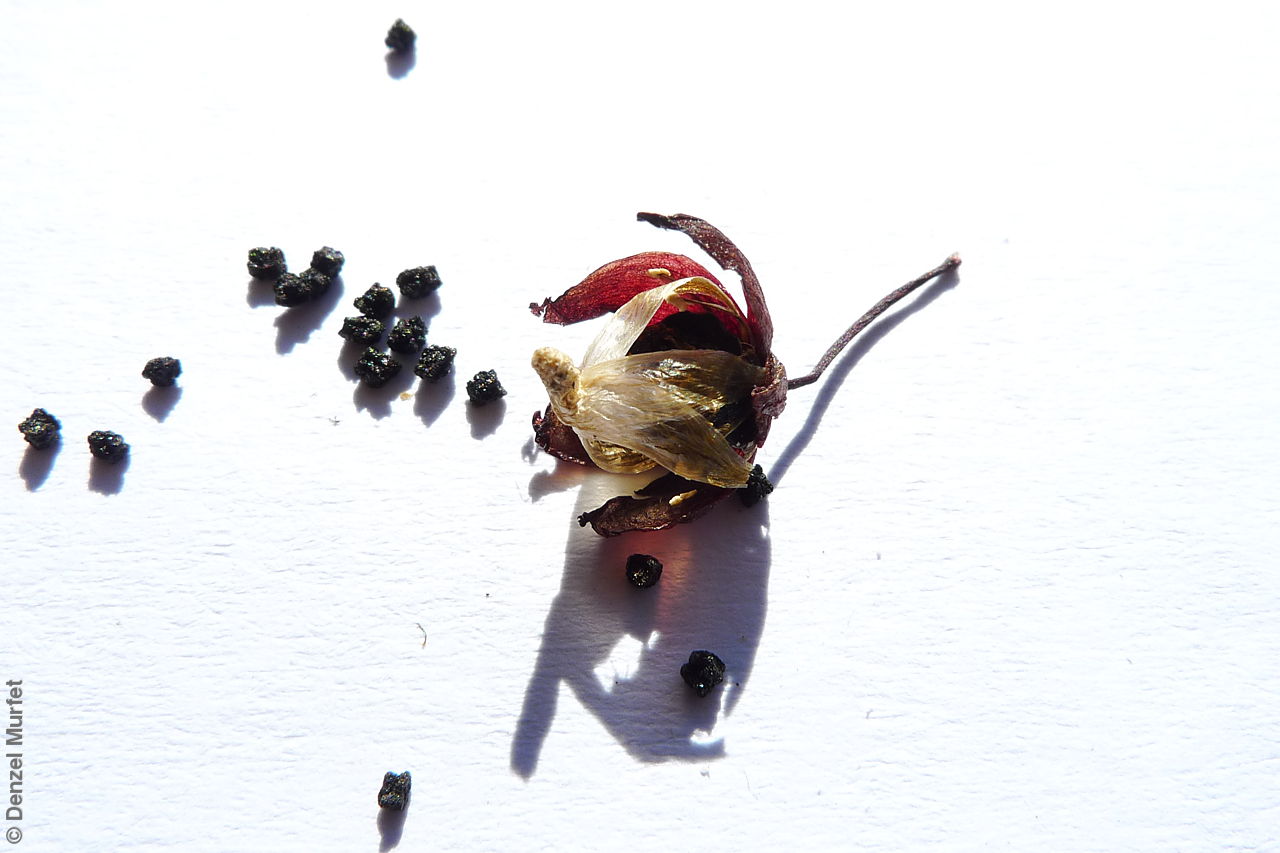
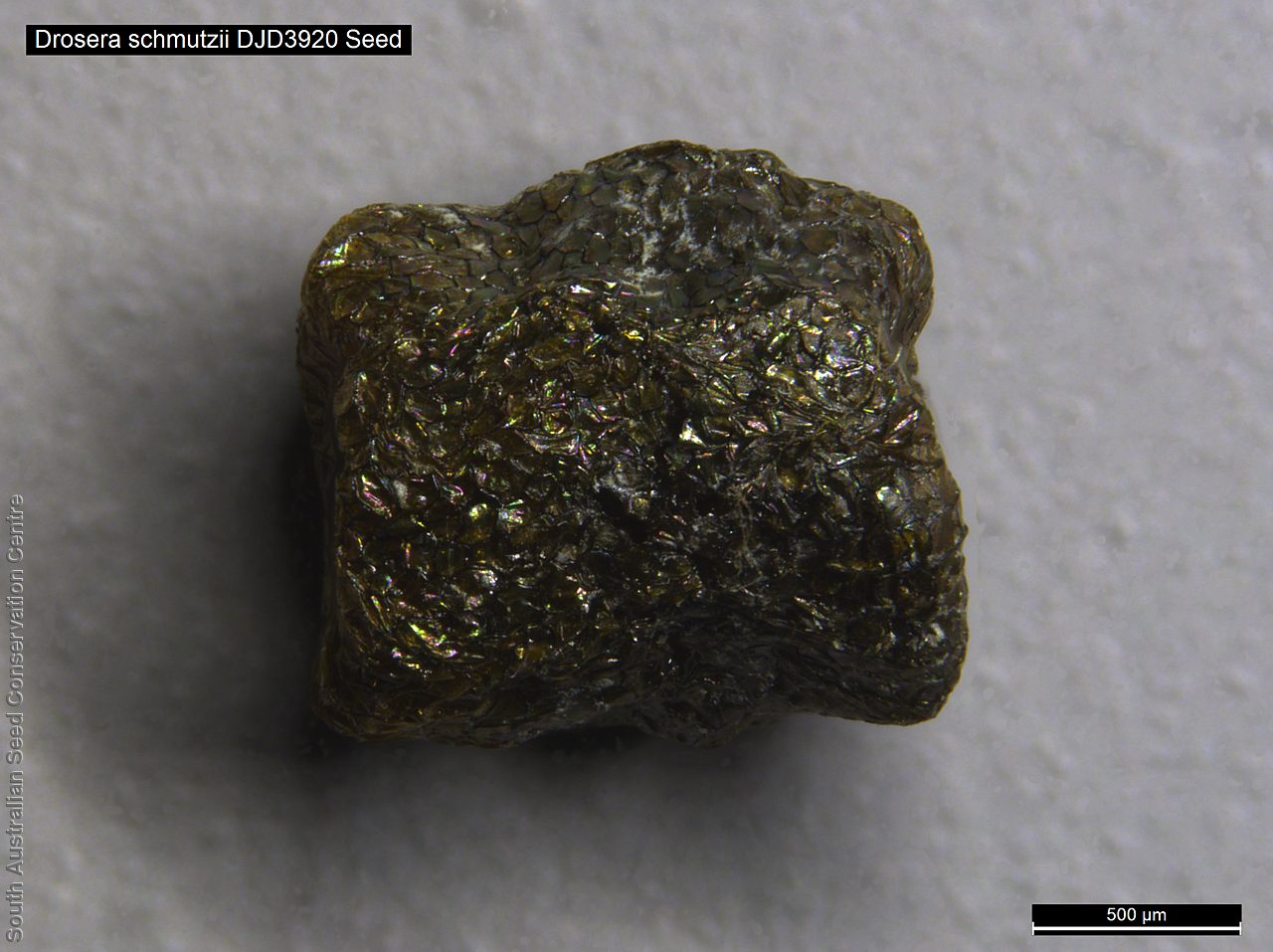
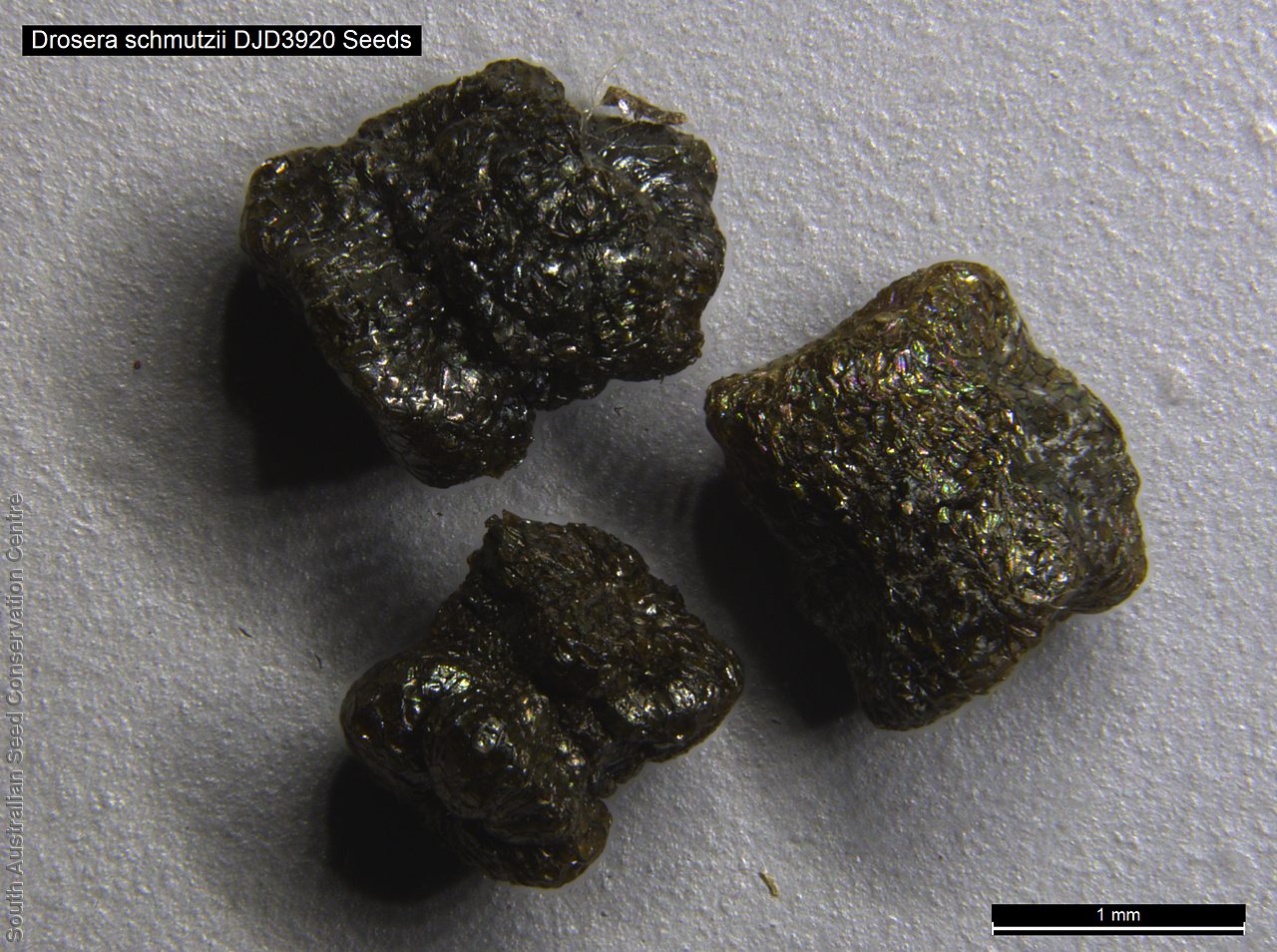
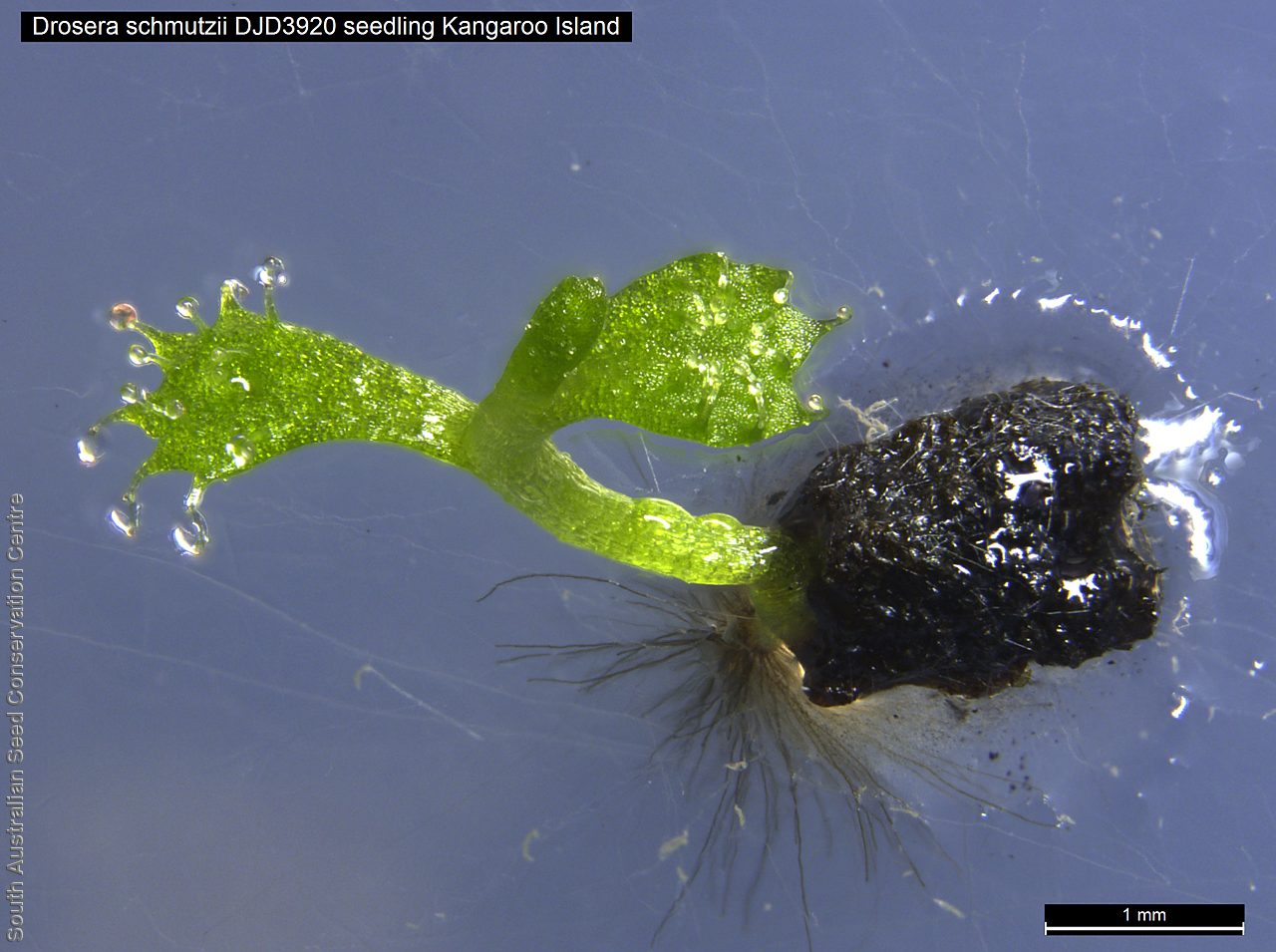
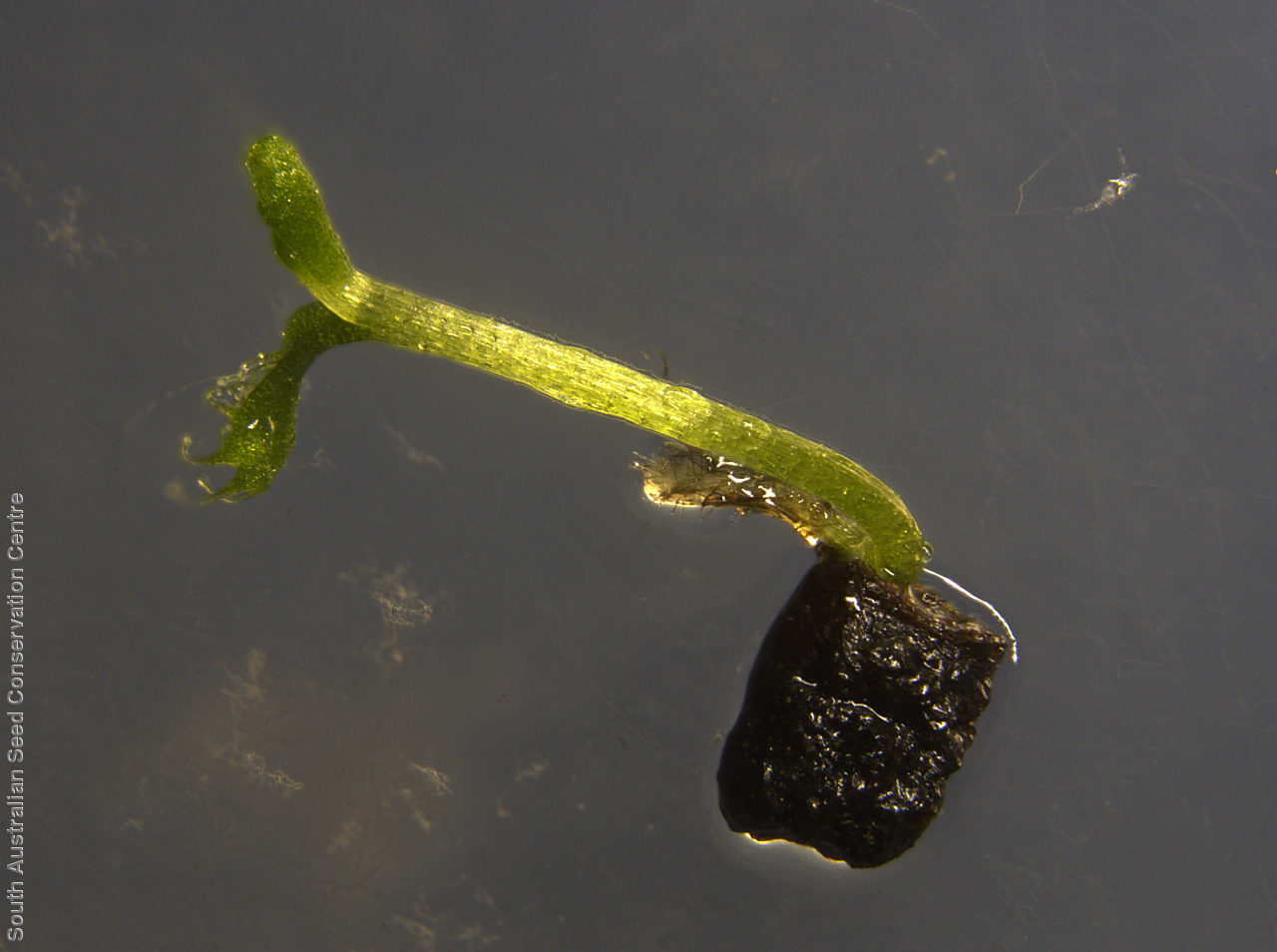

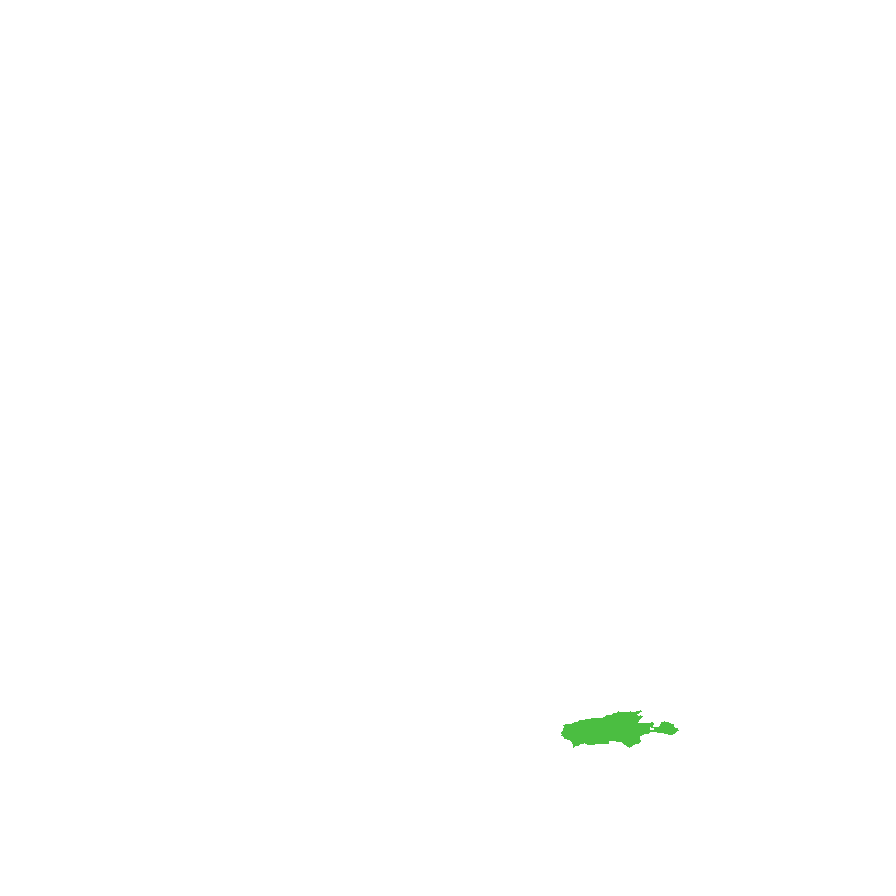
Etymology
Drosera from the Greek 'droseros' meaning dewy, alluding to the glistening hairs of the glandular leaf laminae. Schmutzii named in honour of Father Erwin Schmutz SVD (Society of the Divine Word) of the German Catholic Centre, Collinswood South Australia who discovered this species. He is an accomplished and passionate field naturalist of flora, fauna and geology in Indonesia and South Australia.
Distribution and status
Endemic to South Australia and restricted to Kangaroo Island, growing in buff-yellow sandy clay with laterite pebbles, with underlying sandstone. Native. Uncommon in South Australia.
Herbarium region: Kangaroo Island
NRM region: Kangaroo Island
AVH map: SA distribution map (external link)
Plant description
Small herb with a red stem tuber enclosed by multi-layered black sheath. Leaves annual in a semi-erect rosette, green or red, narrowly spatulate to 35 mm long and 15 mm wide. Inflorescence in centre of rosette with 2-7 flowers; pedicels to 4 cm long, arching in fruit; petals cuneate, truncate to shallowly notched, to 14 mm long and 9 mm white. Flowering between June and September. Fruits are brown ovoid to globose capsule to 8 mm diameter. Seeds are gold oblong seed to 1 mm long and 0.8 mm wide, with a black matt-like surface.
Seed collection and propagation
Collect seeds between August and November. Collect mature capsules that are plump, hard, turning brown and contain black seeds. Place the capsules in a tray and leave to dry for one to two weeks. Then rub the capsules gently by hand to dislodge the seeds. Use a sieve to separate the unwanted material. Store the seeds with a desiccant such as dried silica beads or dry rice, in an air tight container in a cool and dry place.
Fire response
Obligate re-seeder, only tiny seedlings noted emerging in fire scars and no re-sprouting observed.
Longevity: 1 years
Time to flowering: 1 year
Recovery work
In 2020-2021 this species was assessed post-fire in 1 year and 2 year old fire scars. A total of 9,200 seeds have been collected & banked for a population inside the 2020 fire scar. Germination screening testing the response to fire cues will be undertaken in 2021.This project was supported by the Garfield-Weston program.
| Location | No. of seeds (weight grams) | Number of plants | Date collected | Collection number Collection location | Date stored | % Viability | Storage temperature |
|---|---|---|---|---|---|---|---|
| BGA MSB | 5,000 (2.100 g) 4,100 (1.740 g) | 100+ | 3-Nov-2020 | DJD3920 Kangaroo Island | 28-Jun-2021 | 100% | -18°C |
Number of plants: This is the number of plants from which the seeds were collected.
Collection location: The Herbarium of South Australia's region name.
% Viability: Percentage of filled healthy seeds determined by a cut test or x-ray.